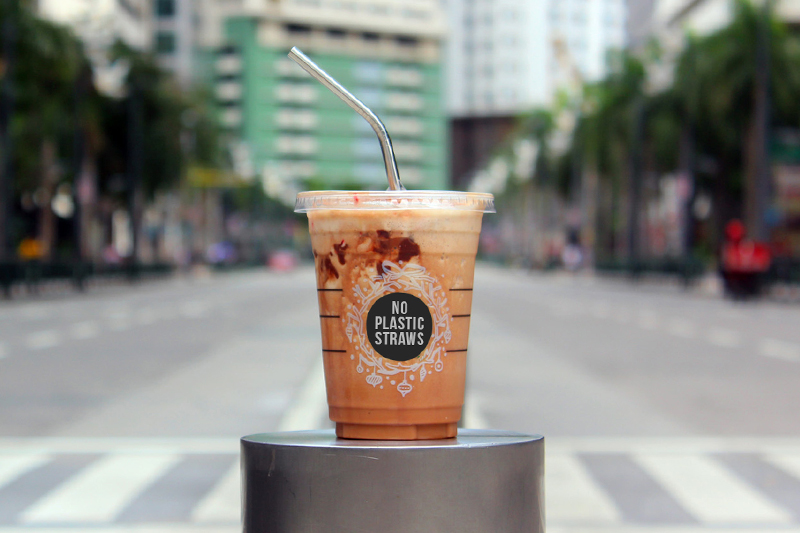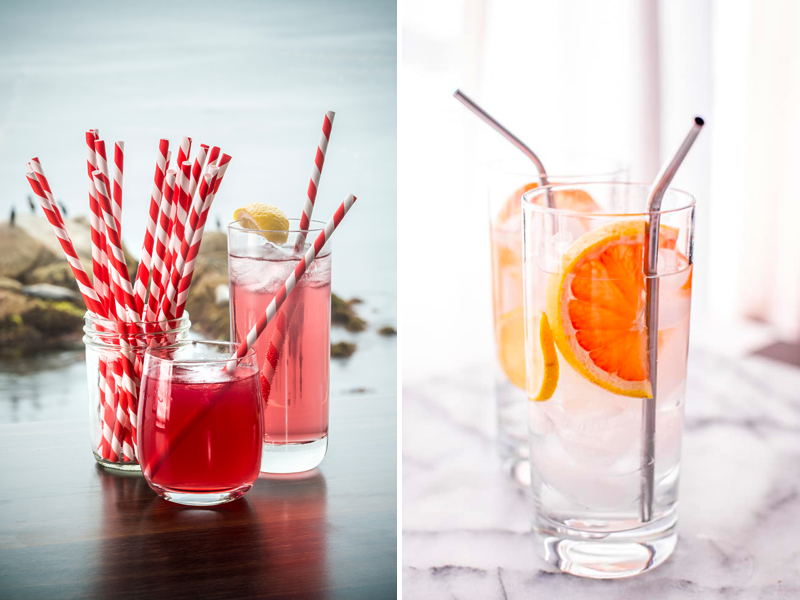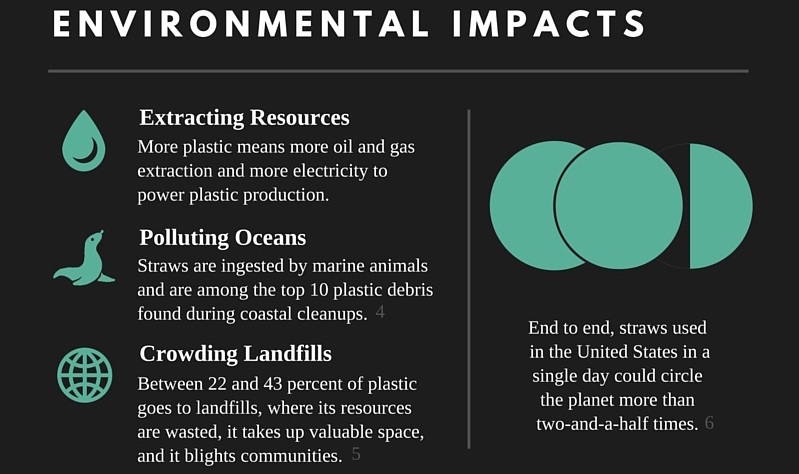
“By 2050, oceans will contain more plastic than fish by weight.” – Dame Ellen Patricia MacArthur
Plastic Pollution is an environmental and social issue that’s seeped into the bones of our ecosystem acutely. As reported by the Plastic Free Challenge, 300 million metric tonnes of plastic is produced each year, and subsequently found in oceans or landfills. 33 percent of the cumulative amount is disposable plastic. Coffee stirrers, straws, bags, single-use plastics get utilised inconspicuously. Taking a small step towards the positive, the plastic straw has been eschewed across the globe. Decoding the No Plastic Straws movement that is gaining momentum in the country, we bring to you the what, why, and how of it.
Sipping a slushy (spiked, of course) on a sunny afternoon or getting a frappuccino on-the-go, the plastic straw appears falsely innocuous. Disposed without a thought, the plastic gets broken down into smaller pieces (no, this toxic relationship doesn’t end at the garbage bin). Often mistaken as food by small animals, it makes its way into their lifecycle. Planktons to whales to humans, bioaccumulation is now part of the House of Life. The salmon you love devouring or anchovies that grace your sandwich – are contaminated and inadvertently introduce plastic to your body. With an estimated half life of over 500 years, it comes as no surprise that pre-polluted birth is now a real danger and the cause of many impairments in humans and wildlife.
The effect of plastic in oceans is two-pronged and when not ingested, it is found floating as debris. Leaching out toxic chemicals, it is the polar rule of opposites attract that dominates plastic pollution. Hence, mass accumulation reigns the oceans and the threat of entanglement hangs over the marine life. If not navigating the waters, landfills act as the resting place for plastic and its chemicals make their way into groundwater, lakes, and rivers. If incinerated in landfills, dioxins are released in the air we breathe and settle onto the crop we eat.
Seemingly inconsequential amidst the 580,000 pieces of plastic per square kilometre polluting the oceans, plastic straws have the world rethinking. 500 million plastic straws are thrown away everyday in the United States of America alone, proving it is anything but insignificant. Appearing unnecessary waste to 9-year-old Milo Cress in 2011, the #BeStrawFree campaign came into existence. Limited by geography, the log phase didn’t last long. The #TheLastPlasticStraw initiative by Jackie Nunez further fuelled the awareness, and support from across the globe poured in. Encouraging the decision to #RefuseTheStraw, the initiative promotes the notion of “Do less. Less consumption, less waste, less straws.”
Slowly progressing towards a less polluted shoreline, it was the video of an Olive Ridley turtle in Costa Rica that acted as the turning point. With the scale tipping towards red in remorse, the video went viral and the awareness graph, exponential. The momentum reached its zenith upon recognition from acclaimed designer Vivienne Westwood in 2017. Receiving over 400,000 shares, the Facebook post warning “The straw in your cocktail or coffee will be on this planet forever,” took the world by storm. A plethora of endorsements followed, and the likes of Ellen Pompeo and Paul Nicklen urged to #StopSucking. Navigating into India, restaurateurs are taking note of the issue at hand. “Look at the amount of rubbish generated in Mumbai and the sheer waste when it comes to plastic; it’s time this stopped,” quoted The Times Of India talking to Riyaaz Amlani, C.E.O and Managing Director Impresario.

Left: Paper Straws, Image: southernweddings.com; Right: Stainless Steel Straws, Image: rootandrevel.com
With Pappco Greenware launching #OneLessPieceOfPlastic initiative, restaurants are championing the movement in India. Pappco’s FDA approved sustainably sourced paper straws are doing rounds across Mumbai and local eateries like Cafe Zoe, The Prithvi Cafe, and Smokehouse Deli have taken to it. Shining the limelight on plastic pollution in the city, the ongoing St+Art exhibition at Sassoon Docks is expanding the circle of cognisance. And Delhi is not too far behind. GreenR Cafe, Perch Wine & Coffee Bar, Di Ghent, Jamie’s Pizzeria, Triple 8, Mahabelly, and Ek Bar, amongst others, have switched to sustainable options like paper, stainless steel, and bamboo straws. DSSC Power Packer 2017, Bar-Back Collective has also issued a mandate for use of potato starch straws. Behind the change lies a thought, “We need to explore a sustainable and environmentally conscious way of living,” says Vaibhav Singh of Perch Wine & Coffee Bar. Veteran A.D Singh concurs, “You use a straw for a few minutes to sip on a cocktail and it eventually ends up in the oceans. When you have a chance and an option to switch to sustainable alternatives, why not?”. With options aplenty, paper, stainless steel, glass, and bamboo, Ek Bar is intelligently experimenting with design and sustainability.
Whilst initial procurement in #OurCity was hindered with obstacles, Vaibhav Singh is spreading the word, “We just supplied hundred pieces of bamboo straws to FabCafe.” Prompting us to keep focus on the bigger picture, he adds, “It is a good step, but a very small and symbolic one. In the end it won’t solve our issues, though it is a beginning.” There is a long way to tread, but each step and each straw makes a difference, and the thought is being resonated worldwide.
Updated on: 04/06/2018


